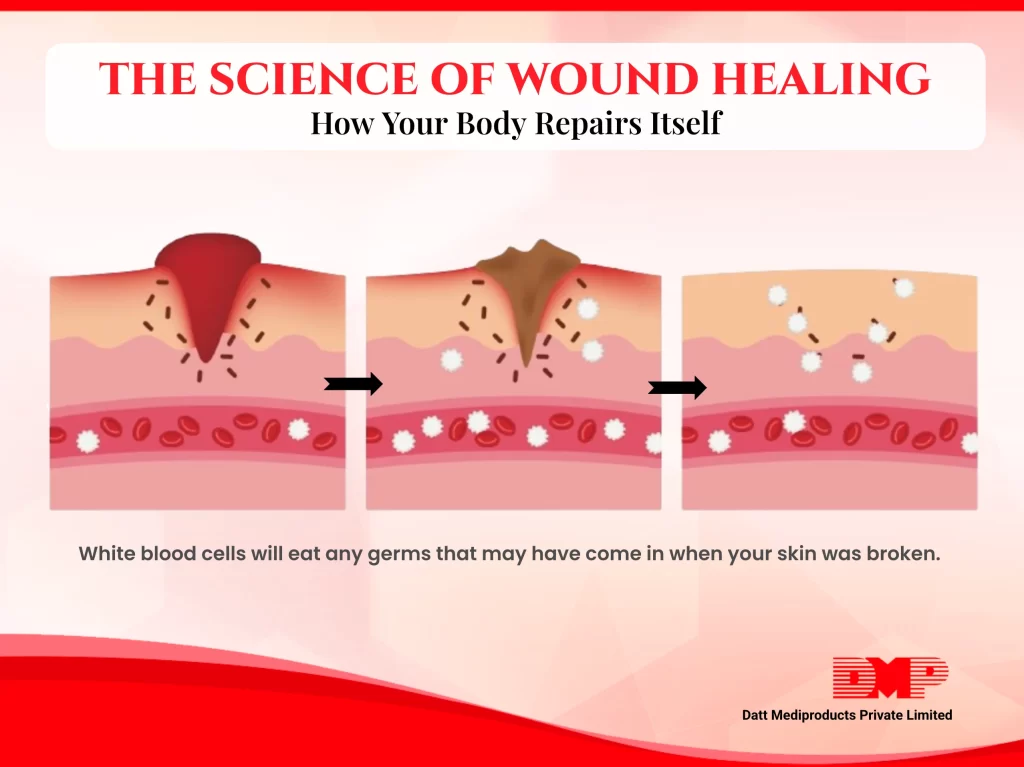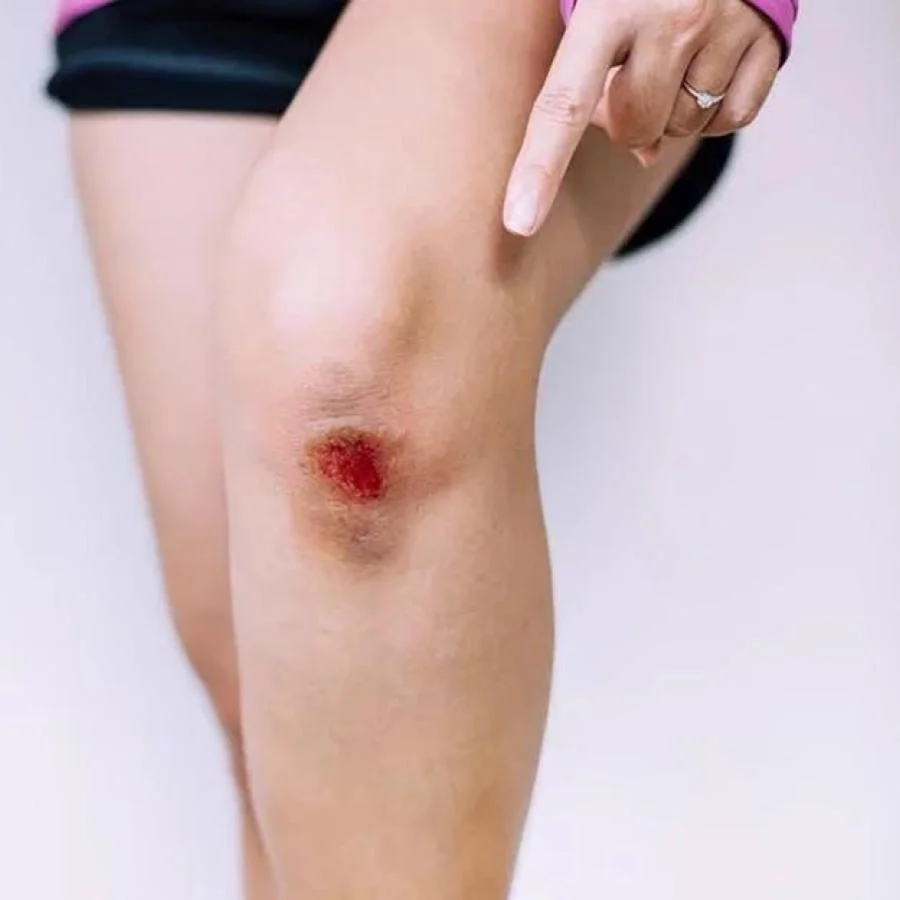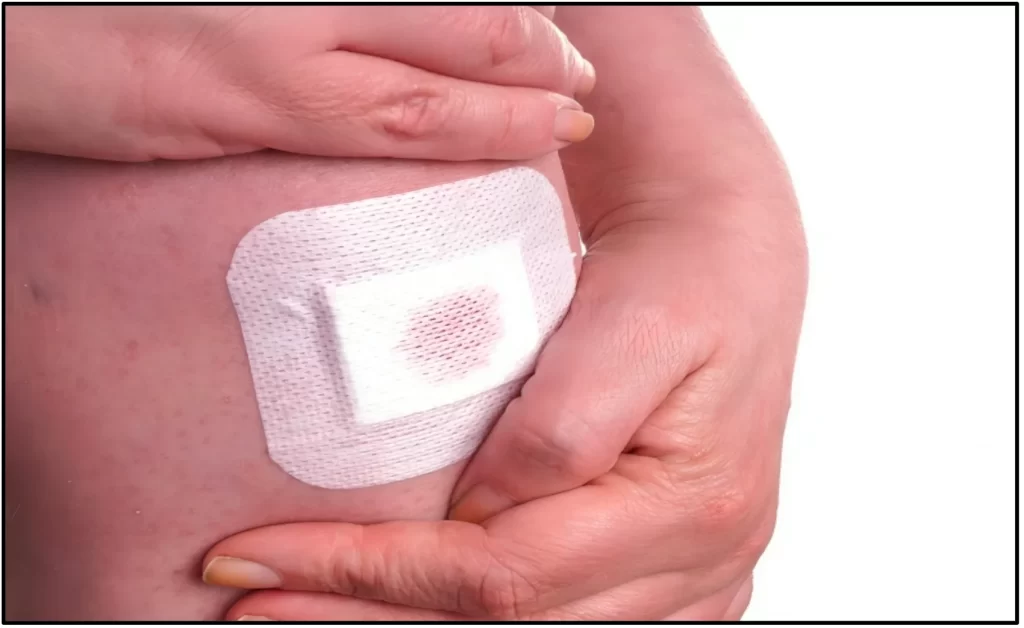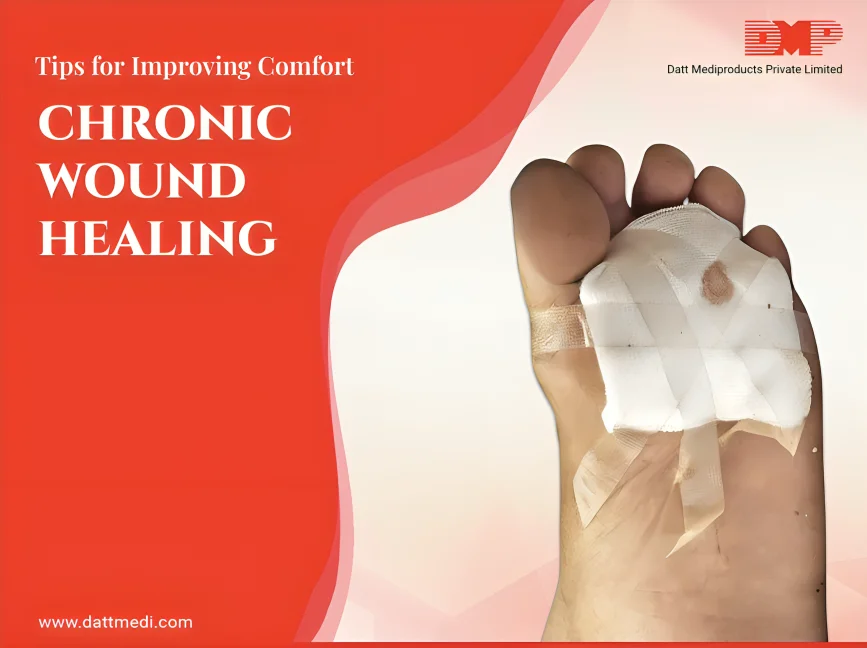
The Science of Wound Healing: How Your Body Repairs Itself
Wound healing is nothing short of a biological marvel. When your skin is injured, your body launches a meticulously coordinated process to restore its integrity and functionality.
Understanding this journey not only highlights the sophistication of our biology but also empowers us to care for wounds more effectively.
The Remarkable Phases of Wound Healing
Imagine you’ve just scraped your knee.
What happens next might seem simple, but beneath the surface, your body is hard at work.

Wound healing unfolds in four incredible stages:
1. Hemostasis (Minutes to Hours)
The moment an injury occurs, your body springs into action to stop the bleeding. Blood vessels constrict, and platelets rush to the scene to form a clot. This clot acts as a temporary seal, buying your body time to prepare for deeper repairs.
2. Inflammation (1–5 Days)
Next, your immune system steps in. Neutrophils and macrophages arrive to clear away debris and bacteria, ensuring the wound is clean and ready for rebuilding. The redness, swelling, and warmth you notice are signs of this vital repair work.
3. Proliferation (4–24 Days)
Now the real construction begins. Fibroblasts produce collagen to lay the foundation of new tissue, while blood vessels grow to supply nutrients and oxygen. You’ll see granulation tissue—pink and bumpy—as the wound starts to fill in, and new skin cells begin to migrate across the surface.
4. Maturation (21 Days to Months)
In the final phase, your body strengthens and remodels the new tissue. Collagen fibers are cross-linked for durability, and scar tissue forms. While scars may not have the same elasticity as uninjured skin, they are a testament to your body’s incredible ability to heal.
While the healing process is natural, it doesn’t occur in isolation.
A range of factors can either speed it up or slow it down:
- Age and Health: Older age, diabetes, and immune disorders can delay healing.
- Nutrition: Nutrients like protein, zinc, and vitamins C and E are essential for tissue repair.
- Lifestyle Choices: Smoking and alcohol reduce oxygen supply to tissues, hindering recovery.
- Wound Care: Proper hygiene and dressing techniques can prevent infection and promote faster healing.
Did you know
Keeping a wound moist can significantly speed up healing?

Moisture creates the perfect environment for cells to migrate and for granulation tissue to develop. Modern dressings, designed to maintain this balance, have revolutionized wound care by reducing healing times and minimizing scars.
Cutting-Edge Advances in Wound Care
Science continues to push the boundaries of what’s possible in wound healing. Some groundbreaking innovations include:
- Growth Factors: These proteins supercharge the repair process, stimulating cell activity.
- Biomaterials: From hydrogels to bioengineered skin substitutes, these materials mimic natural tissue to accelerate healing.
- Stem Cell Therapy: Stem cells encourage the regeneration of complex tissues, offering hope for chronic wounds.
- Hyperbaric Oxygen Therapy: By delivering concentrated oxygen, this therapy enhances cellular activity and reduces infection risk.
Supporting Your Body’s Natural Healing Powers
Healing isn’t just about what happens on a cellular level—your lifestyle choices play a critical role:
- Eat Right: Protein-rich foods and micronutrients like zinc and vitamin C fuel the repair process.
- Avoid Harmful Habits: Smoking and excessive alcohol consumption can severely impede healing.
- Prioritize Rest: Quality sleep and stress management boost your immune system, giving your body the tools it needs to recover.
While most wounds heal naturally, some may require medical intervention. Watch for signs of delayed healing, such as persistent redness, swelling, or unusual odors. Chronic wounds or excessive scarring, like keloids, might benefit from specialized treatments.
The journey of wound healing is a testament to the resilience of the human body. Each phase, from hemostasis to maturation, reflects a symphony of biological processes working in harmony. By caring for your wounds and supporting your body’s natural abilities, you can pave the way for smoother, faster recoveries. And with the advancements in medical science, the future of wound care looks brighter than ever.




